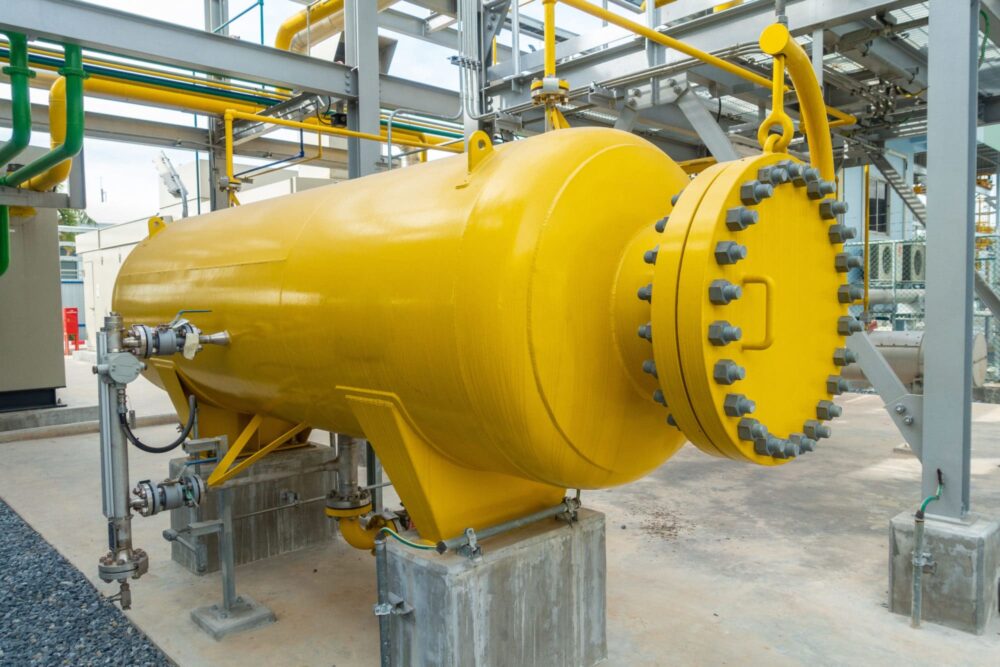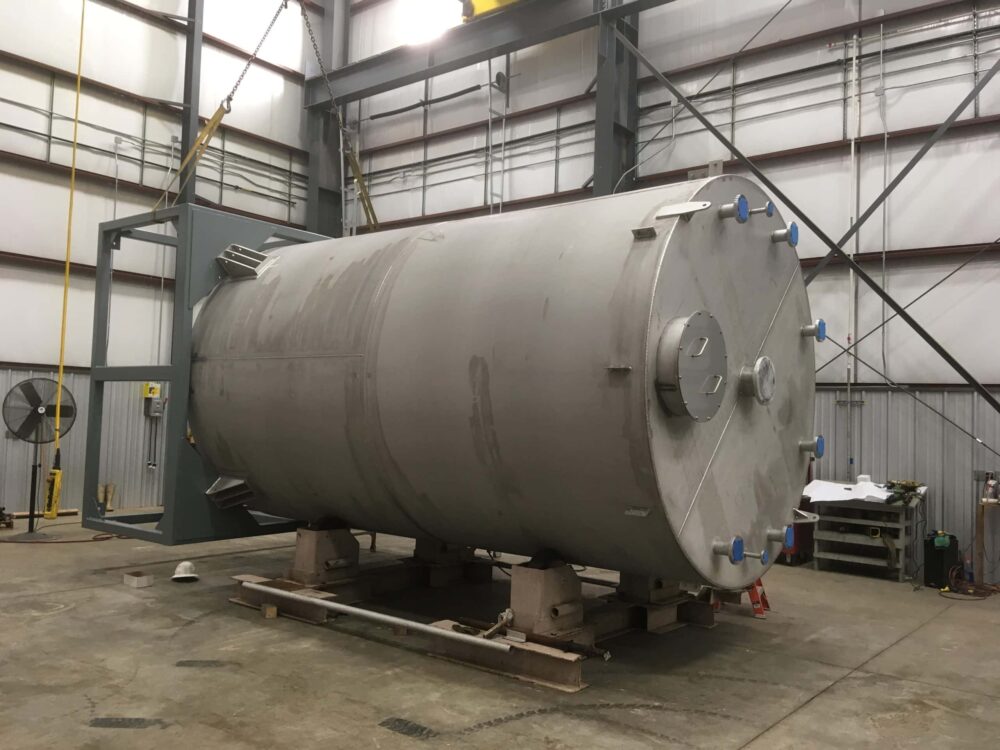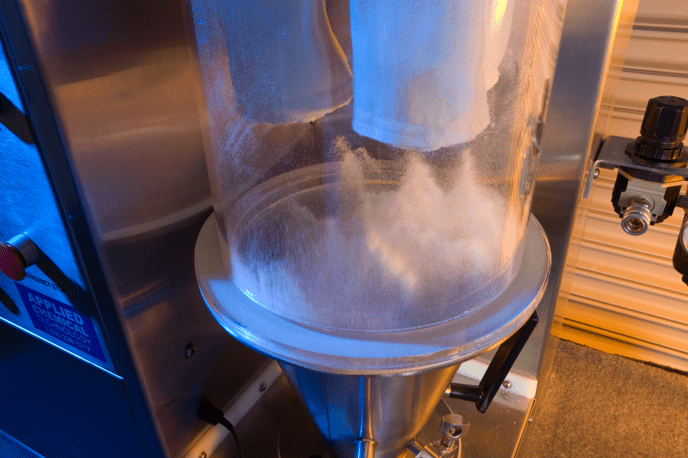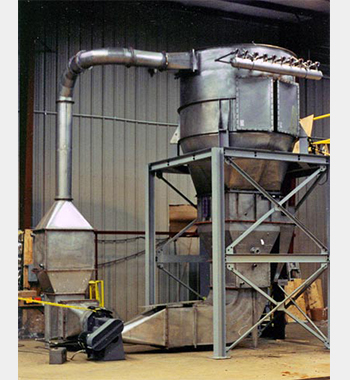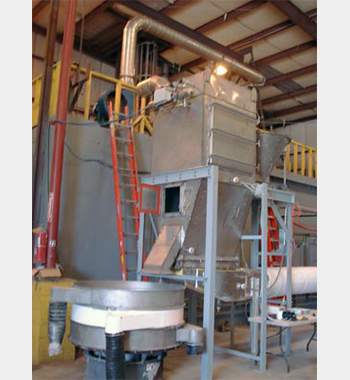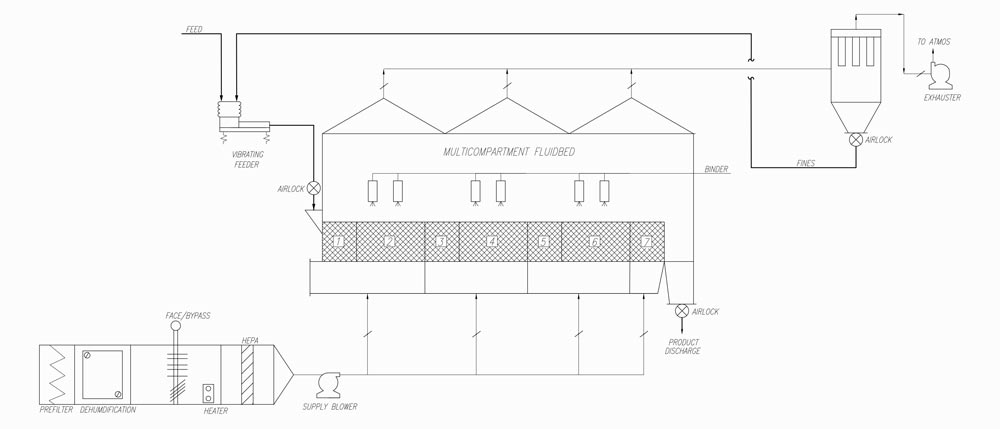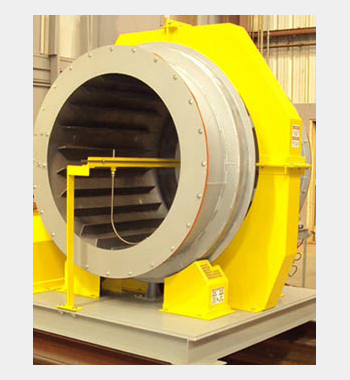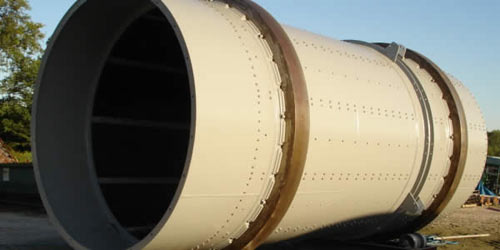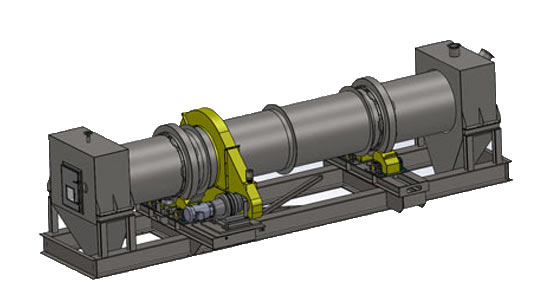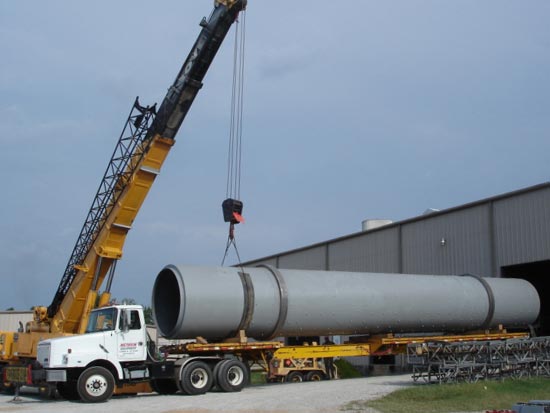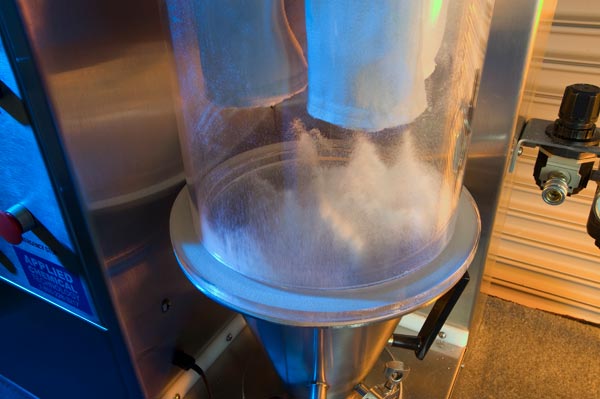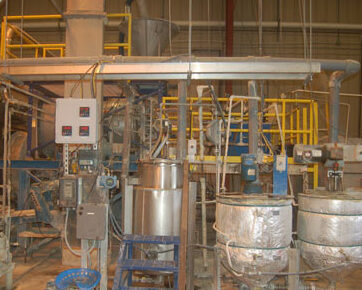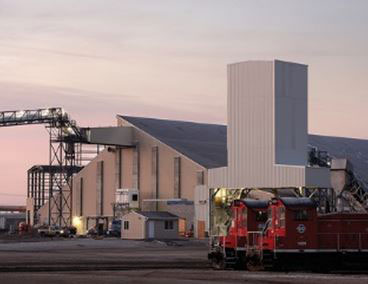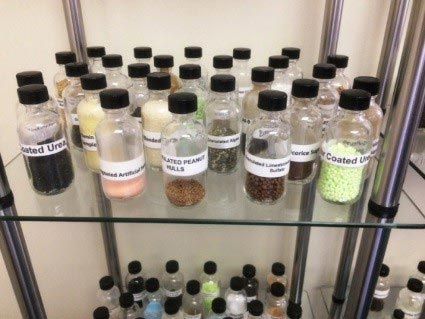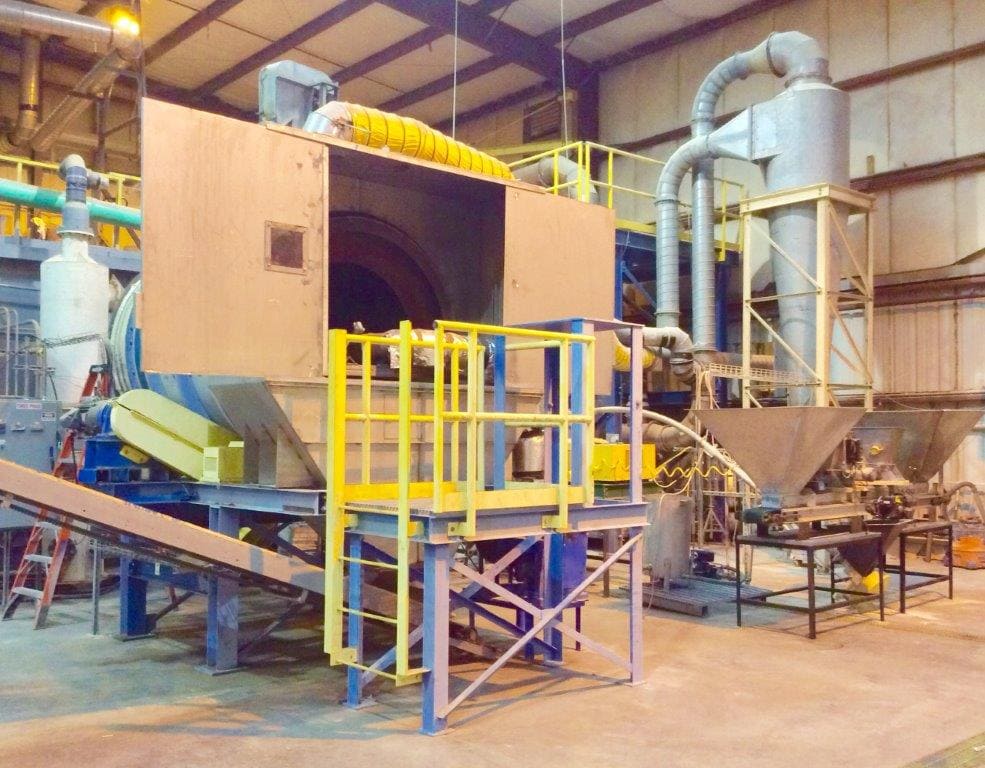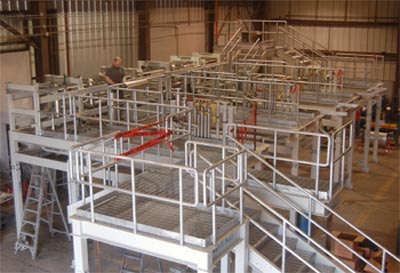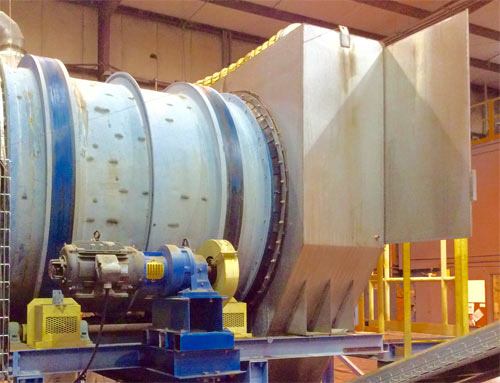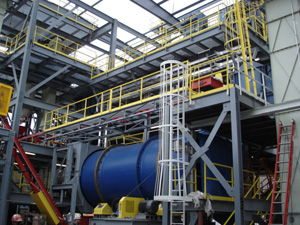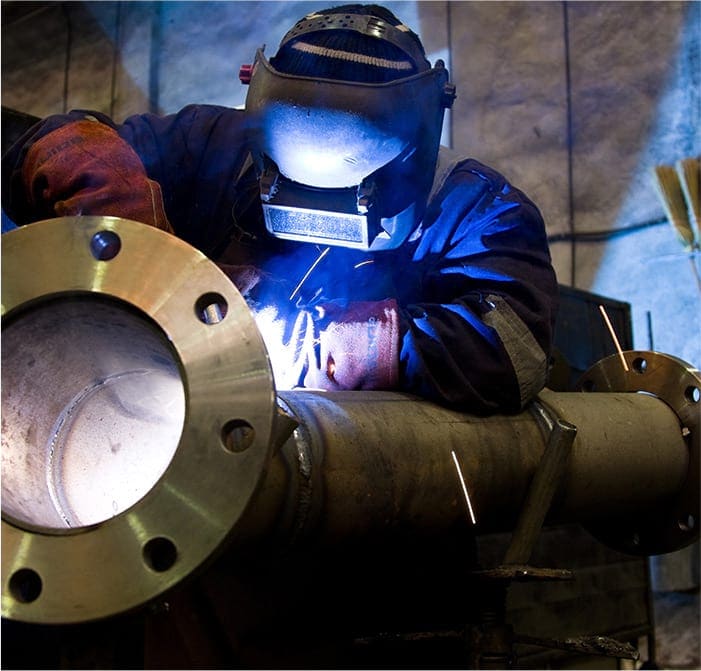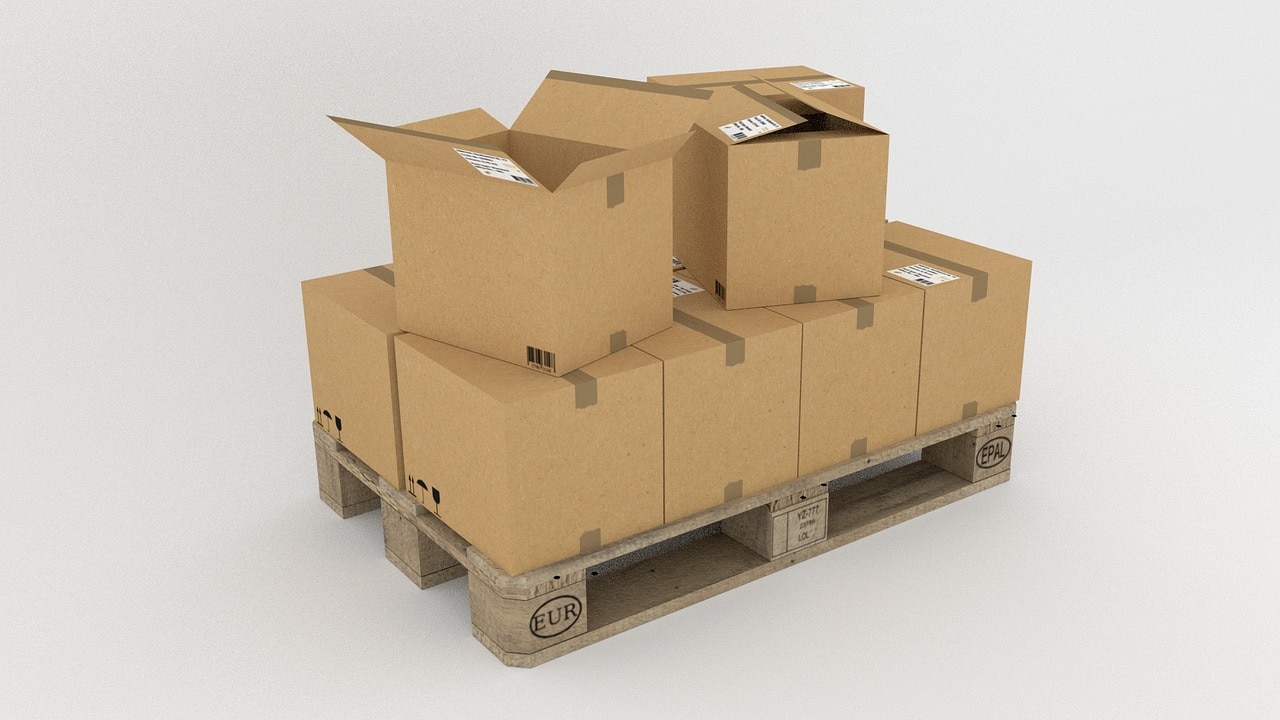Rotary dryers are chosen by industry for their dependability and low cost. Not only are they rugged, but they are also a reliable method for producing consistent product when feedstock may vary. In addition, rotary dryers allow for zones within the drum to perform multiple processes. For example, a single rotary drum may include a zone for drying and a later zone for classifying.
Direct-Heat Rotary Drum Dryers

Direct-Fired Rotary Dryer
In a direct-heat rotary dryer, the material being dried comes into direct contact with a stream of heated gases. The hot gases may be combustion gases that are mixed with air, clean air that has been heated, or some other specialty gas. The material being dried is fed into one end of the rotating drum and is lifted by internal flights to cause it to cascade through the stream of hot gas. The drum is angled down on the discharge end which moves the material gradually toward that end of the drum. The gas stream can enter the drum from either end. If it enters at the feed end of the drum, it is known as a direct-fired co-current rotary dryer, and if the gas enters at the discharge end then it is a direct-fired counter-current rotary dryer.
Indirect-Heat Rotary Drum Dryers
For various reasons, some products dried in a rotary dryer require special conditions that cannot be met by a direct-heat rotary dryer. For example, more control of the atmosphere within the dryer to promote oxidation or reduction may be required. The material may be extremely fine or need to be handled more gently. For other processes like drying food, preventing contamination of the product is important. Each of these issues can be addressed by the use of an indirect-fired rotary drum dryer. For this type of rotary dryer, the heat for drying is applied to the shell of the drum. This may be accomplished by steam jacketing, oil heating, or furnace encasement of the rotary drum.
An indirect-fired rotary dryer also has specialized flights within the drum. These flights are included to provide enough agitation of the material to promote efficient heat transfer. Because the shell itself is heated, the gas velocities within the drum are lower and the size of the gas handling system is smaller.
Why Choose an Indirect-Heat Rotary Drum Dryer?
Generally speaking, direct-fired rotary drum dryers are more efficient that indirect-fired dryers. However, there are advantages to choosing an indirectly heated rotary dryer.
- Protection of Product from Contamination
- Lower Gas Velocities Produce Less Entrainment
- Gentler Handling of Materials
- Smaller Off-Gas Handling System
- More Precise Temperature Control






